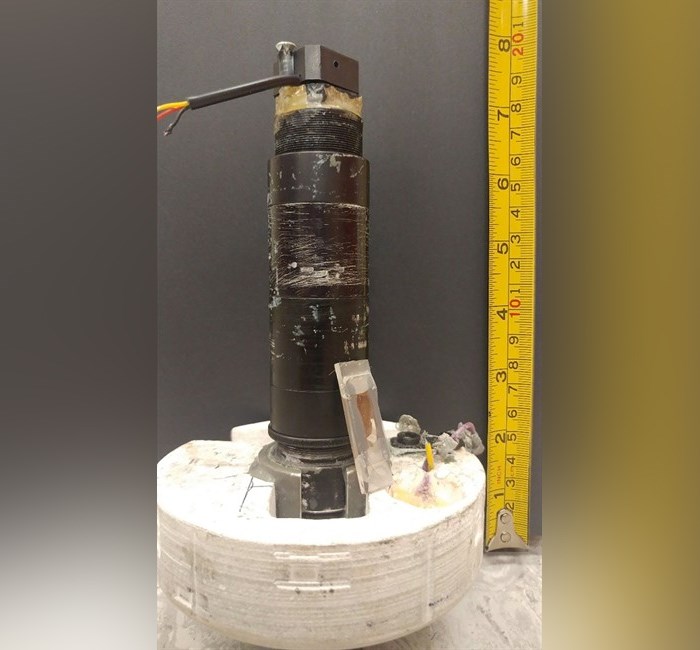 A prototype of a new microscope being developed by researchers at Simon Fraser University that is a fraction of the cost of similar devices and can run more studies faste is shown in a handout photo. A new, cheaper microscope developed at a university in British Columbia has the potential to rapidly accelerate research on molecules, scientists say. THE CANADIAN PRESS/HO-Simon Fraser University
A prototype of a new microscope being developed by researchers at Simon Fraser University that is a fraction of the cost of similar devices and can run more studies faste is shown in a handout photo. A new, cheaper microscope developed at a university in British Columbia has the potential to rapidly accelerate research on molecules, scientists say. THE CANADIAN PRESS/HO-Simon Fraser University
A new, cheaper microscope developed at a university in British Columbia has the potential to rapidly accelerate research on molecules, scientists say.
The mini-radio centrifuge force microscope is designed to test the strength of molecules and can complete a decade's worth of experiments in a matter of days, said Nancy Forde, a physics professor at Simon Fraser University in Burnaby.
It also comes with an appealing price tag. The new microscope costs only $500 to build, compared with $150,000 for similar devices.
"There are just so many questions we're able to answer now at a much faster rate," Forde said. "It's phenomenal."
Forde's research focuses on DNA and collagen molecules, the building block of tissue and skin.
Better understanding collagen allows researchers to develop solutions for health issues involving the molecule, Forde said.
But experiments for her research have long been onerous tasks, with previous equipment only allowing for the testing of two molecules per day.
Now that's changing, thanks to the new microscope built by Mike Kirkness, a molecular biology and biochemistry PhD student at Simon Fraser University.
A study published this month in Biophysical Journal shows Kirkness was able to do 10,000 experiments in a matter of days with the new device.
The hand-sized portable and wireless microscope is much easier to work with than table-sized devices it was designed to emulate, Kirkness said.
Unlike microscopes most people imagine in science labs or classrooms, the mini-radio centrifuge force microscope doesn't use light and slides because molecules are too small to see with that type of technology.
Instead, researchers place their choice molecule into a chamber in the device and add microscopic beads of other chemicals that tether the molecule to the glass chamber like a ball and chain, Kirkness explained.
The microscope is then placed in a centrifuge, a machine found in most labs that has a bucket that spins samples at a rapid speed.
A wireless camera built into the microscope sends an image to a computer so researchers can watch in real time the effect of applying force from the spinning and how the molecules are pulled apart, Kirkness said.
The device will have a big impact on researchers' ability to do new screening tests on molecules and cells, Forde said.
In order for these experiments to work, scientists need a clear image of the molecule as the force applied to it increases, she said.
"What the microscope is really excellent at is maintaining this imaging plane even at extremely high forces," Forde explained.
The images generated don't have the same high-quality resolution that table-sized devices offer, but the new microscope's efficiency and cost make up for the shortcomings, Kirkness said.
"The benefit is that it's quite reasonably easy to use and we can do a lot of multiplex experiments ... at the same time," he said.
Instructions on how to build the microscope have been published in Biophysical Journal and Kirkness said all of the parts required for it are relatively easy to buy.
The researchers said they have already been contacted by scientists across North America who are interested in building their own devices.
—Follow @Givetash on Twitter.
![]()


